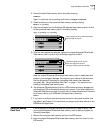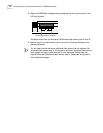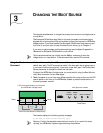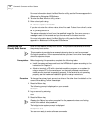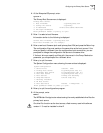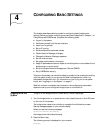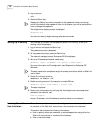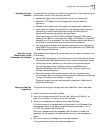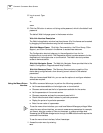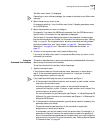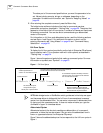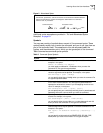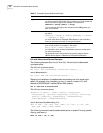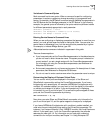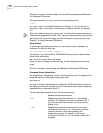
Learning About the User Interfaces 19
Accessing the User
Interface
To access the user interface or to modify the configuration of the bridge/router or
tunnel switch, use one of the following methods:
■ Access the bridge/router commands locally through the console port.
■ Establish an HTTP session with the bridge/router using the Web Link
application.
■ Establish a Telnet session with the bridge/router using security passwords.
■ Use a device (for example, a workstation) on the same extended network or
internetwork to access the bridge/router through the Telnet protocol.
Enterprise OS software also supports outgoing Telnet.
The software supports TCP and UDP over Bigger Addresses (TUBA), which
means you can Telnet to the bridge/router using an IP address or an OSI NSAP
address from a PC or workstation. For more information about using Telnet on
a workstation, see the manual that accompanies the workstation.
■ View and configure a subset of bridge/router parameters from a remote host
using SNMP. For information on preparing the bridge/router to run SNMP, see
Using Enterprise OS Software.
Web Link Versus
Menu-Driven Versus
Command-Line Interface
After accessing the bridge/router user interface, you can issue a command in one
of three ways:
■ Use the Web Link application if you are unsure of the command syntax and you
have a compatible web-based browser on your network management station.
■ Use the menu-driven interface if you are unsure of the command syntax.
For more information about the MEnu command, see Reference for
Enterprise OS Software. For information on how to use the menu-driven
interface, see the next section.
■ Enter the command at the system prompt if you know the exact syntax.
For information about the command line and rules for entering commands, see
“Using the Command-Line Interface” on page 21.
The syntax for each command and parameter is described in Reference for
Enterprise OS Software.
Using the Web Link
Application
To log onto and configure a bridge/router using Web Link, follow these steps:
1 Install the hardware and install all cables.
2 Log on to the system and set up IP routing. See “Setting Up IP Routing” on
page 18 for instruction on how to set up the IP address.
3 Set up your management workstation with a valid IP address.
To communicate with the bridge/router or tunnel switch, the IP address of the
management station should be an unused IP address in the range 10.1.0.2 -
10.1.255.254; subnet mask 255.255.0.0.
Once your management station possesses a valid IP address, the Web Link
application can be opened in the web browser running on the management
station.
4 Point your browser at the bridge/router interface IP address.
You are prompted to enter a user name and password.



